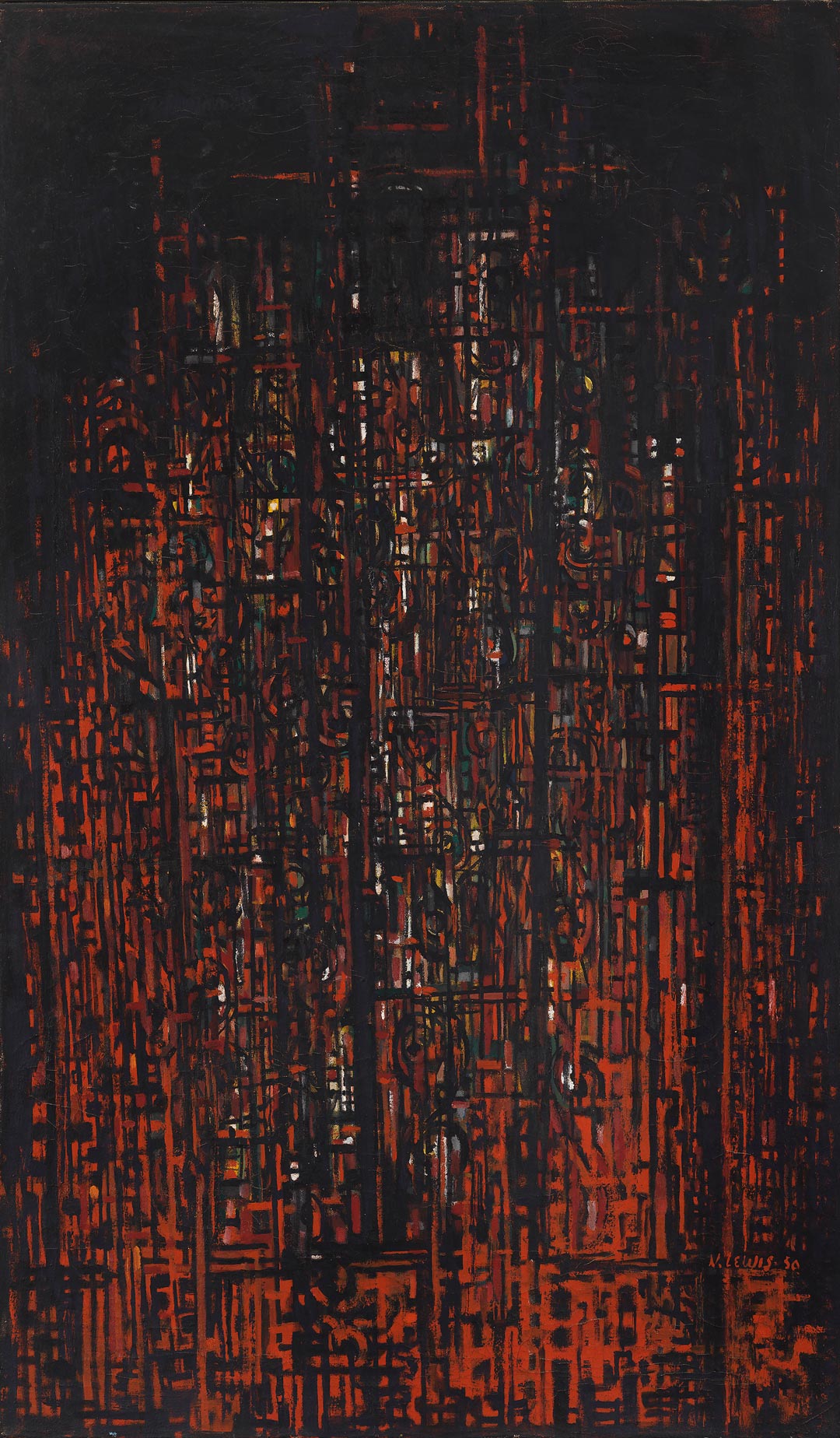Painting, 1950
1950
Ad Reinhardt
American (1913–1967), oil on canvas, 60 x 36 in., Gift of the Friday Foundation in honor of Richard E. Lang and Jane Lang Davis, 2020.14.14, © 2021 Estate of Ad Reinhardt / Artists Rights Society (ARS), New York.
Painting, 1950
Norman L. Kleeblatt
From the mid-1950s until his untimely death in 1967, Ad Reinhardt focused on his legendary black paintings. A decidedly radical approach in his relentless pursuit of purifying art, they epitomized a so-called desire to move toward the “ultimate” or “end” of painting. Enigmatic and inscrutable, seemingly deadpan yet highly complex, the black pictures have come to define his oeuvre. In their optical, spatial, perceptual, and conceptual density, these are the works most closely associated with Reinhardt’s historic achievement. On the one hand, they are iconic paintings of the postwar New York School. On the other, they stand apart visually and formally from the work of many of the best-known Abstract Expressionist painters. The black paintings are ultimately the culmination of Reinhardt’s earlier geometric and organic abstraction, which were pivotal to the development of his thinking and theorizing. As with the evolution of the work of the non-objective artist Piet Mondrian—and to some extent like that of the Abstract Expressionist coterie of painters with whom Reinhardt associated—the development and distillation of Reinhardt’s style mainly undergoes a progressive, high-modernist trajectory.
Reinhardt’s Painting, 1950 (1950) is a clear and important conduit en route to the climactic black pictures. As discussed later in this essay, it is also one of the few among the artist’s predominantly untitled canvases (sometimes also called “abstract paintings”) that bear an alternate moniker—in this case, “Brown Windows,” which unexpectedly for Reinhardt links to the material world.1 His lush Morse code of inky brown and gray/brown horizontal and vertical marks seems to intrude and begins to obliterate—some might say intensify—his luminescent, subtly graded salmon-red background. In the center of the painting’s lower quarter are two sharp, brighter crimson lines that glow as they extend horizontally, like the filaments of an incandescent bulb. At the same time, they form the source for the pigmentation of the picture’s background hues. In describing the evolution of Reinhardt’s work from the late 1940s until 1955, the art historian Lucy Lippard, curator of Reinhardt’s first major museum retrospective, in 1966, proffered a teleology for his compositions. They had evolved, she said, “from rectilinear all-color bricks to asymmetrical bars on solid grounds of neo-plastic origin, to symmetry, to fewer and fewer elements, to the single tri-section or cross.”2 The latter refers to the black paintings.
“If a title doesn’t mean anything and creates a misunderstanding, why put a title on a painting?”
Ad Reinhardt
Though Reinhardt had already moved on from creating the multicolored organic/geometric abstractions of his earlier work, by the end of the forties and first years of the fifties he continued to streamline his forms and either restrain his chroma or focus on primary or secondary colors. His goal: to reduce painting to its essence. On a formal, calculated level, Painting, 1950 might easily be considered a precursor of these tighter, generally brighter, more geometric “brick” paintings. Yet Lippard reminds us, if somewhat contradictorily, that the period from 1949 to 1952 is not as predetermined as it might seem. Rather, it generated compositions that are “chronologically confusing, for Reinhardt was working in several transitional manners” at the same time, simultaneously extracting elements of what was known as Abstract Impressionism and post-Cubism.3 Because of this less stylistically linear, back-and-forth formal juggling in the period under discussion, it is likely that in collaborating with Lippard on his first retrospective, Reinhardt intentionally excluded some of the transitional and more eclectic works of these years. According to the art historian Yve-Alain Bois, the 1966 exhibition asserted a forward stylistic progression in his aesthetic vocabularies leading up to the black pictures. Bois thus claimed that, at Reinhardt’s insistence, the retrospective glossed over the more heterogeneous, one might say experimental, period of 1949–52 about which Lippard cautioned.4 Indeed Painting, 1950 and other works out of clear stylistic sequence did not appear in the retrospective. Yet they are crucial to our understanding of the evolution of Reinhardt’s practice.
This period was precisely when the artist became involved with Chinese, Japanese, and Islamic art, as well as with Eastern thought.5 One can readily imagine the Lang canvas’s connection with Chinese calligraphic painting and with the contemplative and meditative nature of East Asian philosophy.6 Here, though, the application of paint in horizontal and vertical brushstrokes is more gestural, more animated, and feels a bit baroque, even expressionistic—especially given the work’s graded, salmon-red background color, which Reinhardt tentatively obliterated with dryly applied, sometimes feather-edged slabs of brown and gray-brown paint. As opposed to the flatly applied background, almost an opaque stain or a traditional primer coat, the tentative gestural nature of some of these upper-layer brushstrokes in Painting, 1950 differs considerably from the ordered, rectilinear blocks that Reinhardt called “bricks,” as in Abstract Painting (1950, fig. 1). The latter compares with his more precise, often more colorful, geometrically controlled pictures of the same year. In fact, Reinhardt labeled a similar approach to paint application, used beginning in the late 1940s, with the paradoxically apt characterization “constructivist-calligraphic.”7
Luminosity is critical to understanding both this painting and Reinhardt’s artistic development. The often-noted association of his work with night is, according to Lippard, from this period forward certainly palpable, visually and even metaphorically. This is especially true of the artist’s later “pure black” paintings, which demand that viewers slow down—virtually stop—allowing their eyes to gradually adjust to the darkness of the canvas in order to detect the varied colors (and light) emerging from seemingly empty, nearly monochromatic canvases. One might well consider the Lang Reinhardt, too, a night picture, with its gray/brown, loosely formed blocks gradually covering, and paradoxically emphasizing, the opaque washes of the crimson-based background, creating the effect of light emanating from within. The tradition of such nocturnal effects goes back to Renaissance and Baroque painters—among them the sixteenth-century Venetian Jacopo Bassano, who often used a red (or dark) primer on his canvas in an application not dissimilar to Reinhardt’s flat, opaque background tones, as well as a wash of darker burnt umber directly underneath the reddish salmon layer.8 Bois noted that writers on Reinhardt frequently described his evocation of darkness and night as both luminous and hypnotic; Bois even refers to a passage in Baudelaire’s poem “Fleurs du mal” as a verbal analogy for such nocturnal light effects.9 The painter and critic Sidney Tillim observed as early as 1959 that “darkness in Reinhardt’s paintings is a form of light,” and, in fact, a complex formal element of Reinhardt’s pictures.10 Yet such manifestations of light, especially as it emanates from darkness, are relatively rare among the work of Abstract Expressionists. Some critics associate this elemental, formal aspect of Reinhardt’s work with that of only two of his contemporaries: Mark Rothko and Clyfford Still.11
However, the flickering effect of Painting, 1950’s luminous salmon background peeking out from the gray and brown/black brushwork is also comparable to that in the pictures of Reinhardt’s close friend and colleague Norman Lewis.12 Lewis was well known for working at night, observing and abstracting urban illumination in a crepuscular evening or pitch-black nighttime. He is also credited with an important group of paintings that have themselves been called and exhibited as “black paintings.”13 One of Lewis’s black paintings is the 1948 canvas The Tenement (fig. 2). With its polychrome abstracted windows as the painting’s sole light source, this work is perhaps the most Constructivist and geometrically reduced painting in Lewis’s entire oeuvre. Reinhardt’s Abstract Painting (1951–52, Tate Collection) employs similar spatial and visual organization, though Reinhardt emphasizes horizontal elements, whereas Lewis focuses on verticals. Yet the conceptual intent of Lewis’s Tenement and Reinhardt’s Abstract Painting differs radically. Reinhardt knew Lewis from various art-world connections in the 1930s and certainly from 1946, when they both taught at (and were both ultimately fired from) the Jefferson School in New York. They became close friends; in fact, Lewis introduced Reinhardt to his future wife, Rita Solomon Ziprowski.14 Moreover, Reinhardt was one of the earliest peers to recognize and admire non-objective elements in Lewis’s paintings of the 1940s. Lewis’s historically important Cathedral (1950, fig. 3), a work of the same year as Reinhardt’s Painting, 1950, suggests a similar interest in fenestration as sources of light effects emerging from a dark canvas. The painting, considered “at the pinnacle of Norman Lewis’s first abstract period,” was shown in the Venice Biennale in 1956 and has recently been acquired by Tate Modern in London.15 Although Lewis’s painting seems to recede, Reinhardt’s pushes forward. Coincidentally, 1950 was the year of the important convening of Artists’ Sessions 35, organized in part by the Museum of Modern Art’s celebrated curator Alfred H. Barr Jr. At that event, Reinhardt sat across from Lewis (fig. 4). In fact, it is likely that Reinhardt brought Lewis as his guest, for Lewis’s name does not appear on an extant invitation list.16 Lewis, who was Black, was the sole person of color at the proceeding.
Reinhardt’s onetime titling of Brown Windows remains perplexing, especially considering Reinhardt’s general resistance to titles and his insistence on the self-referentiality of the work of art. How and when did Reinhardt decide to scribe (in his inimitable script) “Brown Windows” on the board covering the back of this otherwise untitled canvas? The practice of assigning titles to artworks, much debated among Abstract Expressionist painters and sculptors, was a theme under consideration at Artists’ Sessions 35. Reinhardt suggested that doing so might be meaningless or even create confusion (see this essay’s epigraph).17 Nonetheless, he did title a very small cadre of pictures, such as his Tri Landscape (1948, private collection) and Pictograph (1949, private collection), which refer either to nature or to a Jungian mode of pictorial expression.18 More typical of Reinhardt’s titles, when they are not simply labeled “abstract,” “untitled,” or “painting,” are ones that refer specifically to formal elements of the work, as in Blue-Green Painting (1948, Private Collection) or Dark Painting (1953, Private Collection). Memorable, if unusual, is the title Ultimate Painting #39 (1960, Kröller-Müller Museum, Otterlo, the Netherlands). Here, the designation is no longer blandly descriptive but purely intellectual and conceptual, connoting the artist’s purist, reductive goals and his quest to move toward the “last painting” in Western art. Yet why the more descriptive, reference “Brown Windows”?
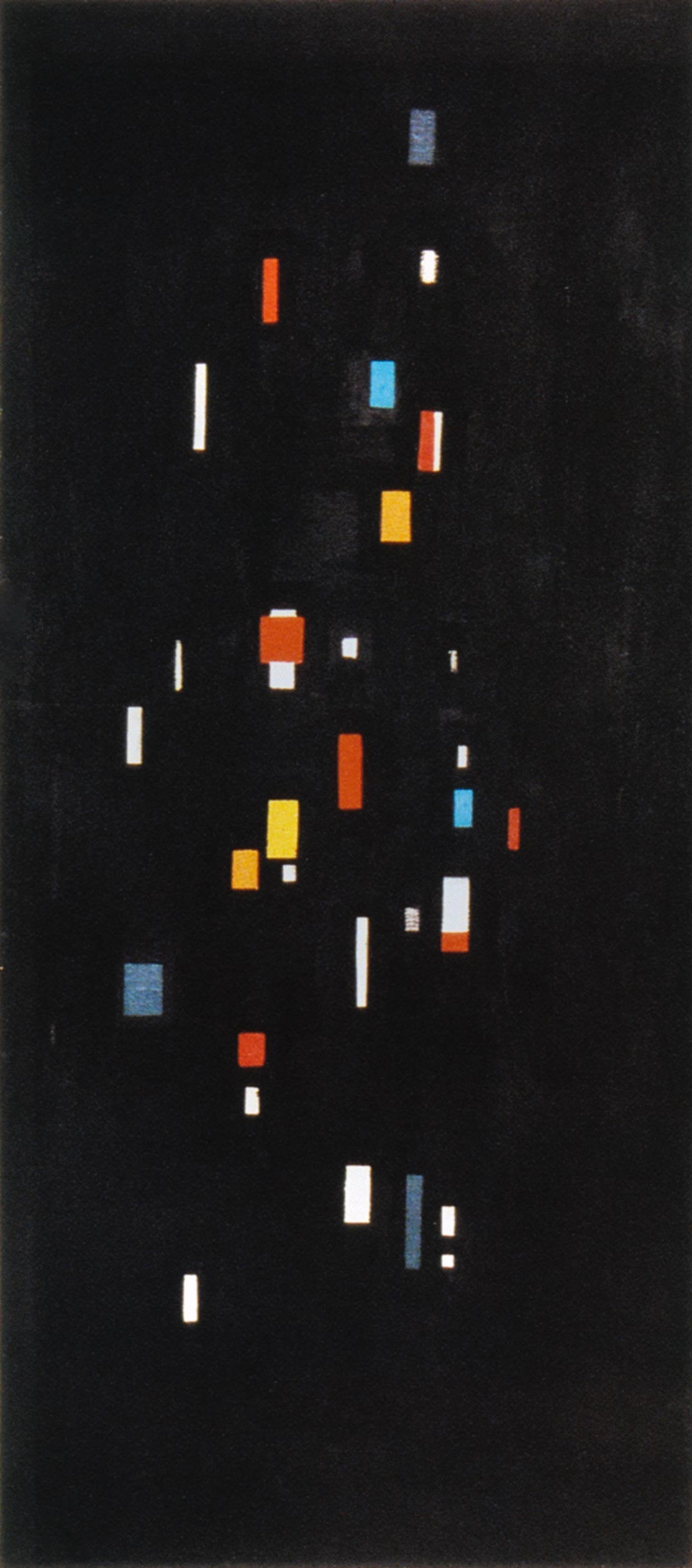
In the catalogue to the artist’s first retrospective, Lippard specifically points out the “window-like forms” in Reinhardt’s output between 1949 and 1952.19 Tantalizingly, and perhaps not coincidentally, Solomon Ziprkowski, whom he married in 1953, had studied at the Jefferson School in New York with Norman Lewis in 1946 when Reinhardt was also teaching there—and subsequently bought Lewis’s Window (1949, Smart Art Museum) from the Willard Gallery. It is possible—in fact, probable—that Reinhardt knew this particular image. Lewis’s abstracted paintings of windows and his focus on nocturnal fenestration in those years may thus offer evidence—albeit partial and circumstantial—for what prompted Reinhardt to add an alternate title on the reverse of Painting, 1950, an act that may have postdated its creation.20 This unusually lush, luminescent work, with its intimations of gestural brushwork, is perhaps one of Reinhardt’s most characteristically Abstract Expressionist. By contrast, the classic, highly reductive black pictures that followed, often challenging to classify under the rubric of Abstract Expressionism, made him an avatar for many in the subsequent generation of Minimal and conceptual artists.
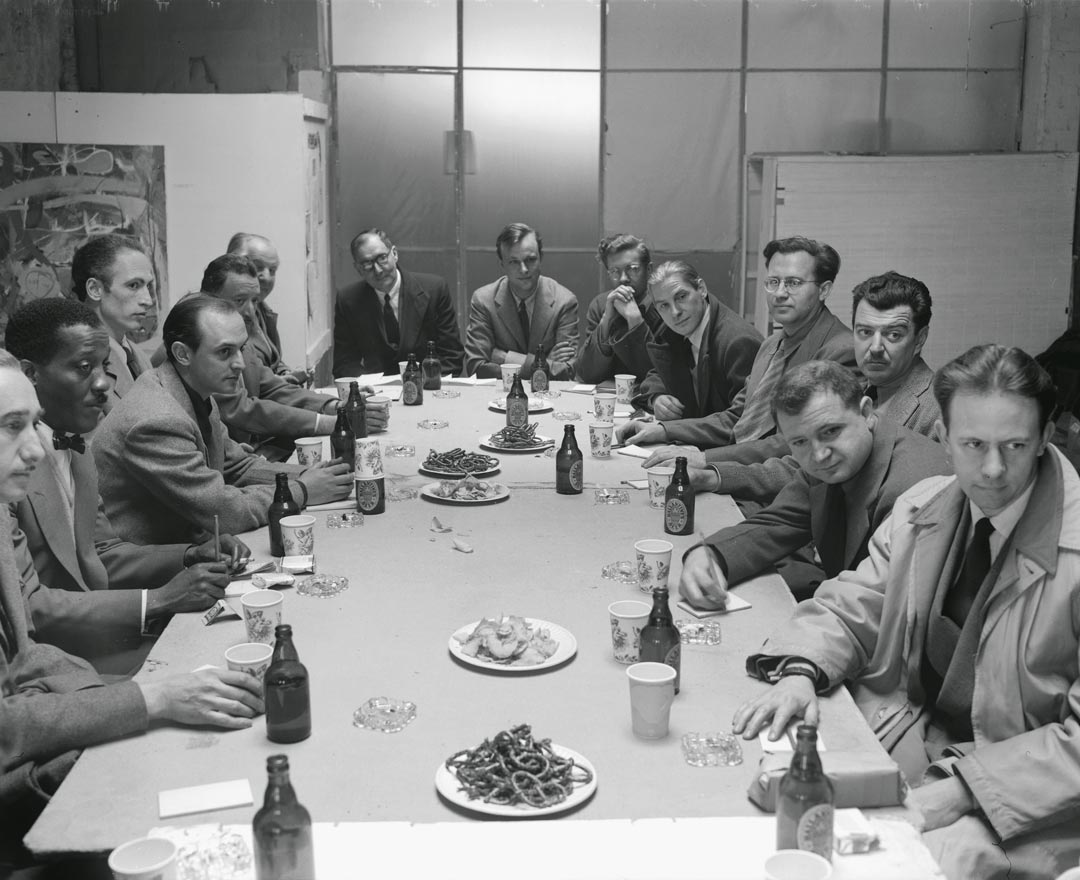
Notes
Norman L. Kleeblatt is an independent curator, critic, and consultant based in New York. He was formerly Susan and Elihu Ruse Chief Curator at the Jewish Museum, New York, where he organized exhibitions on the work of many of the New York School artists, including Action/Abstraction: Pollock, de Kooning, and American Art, 1940–1976 (catalogue published by Yale University Press, 2009) and From the Margins: Lee Krasner, Norman Lewis, 1945–1952 (Yale University Press, 2014).
Notes
Epigraph Ad Reinhardt (1950), quoted in Robert Goodnough, ed., Artists’ Sessions at Studio 35 (1950), rev. ed. (Chicago: Soberscove/Wittenborn, 2011), 24.
1 The backing board of the painting bears the inscription “Brown Windows” in the artist’s distinctive handwriting, and the bill of sale for Painting, 1950 from Marlborough Gallery, made out to Richard Lang and dated 1974, lists Brown Windows as a previous title. In 1951, in the exhibition Ad Reinhardt: Recent Oil Paintings at Betty Parsons Gallery, New York, the work was installed opposite its current orientation (see p. 50 of this volume). By 1960, in the catalogue for Ad Reinhardt: Twenty-Five Years of Abstract Painting at Parsons, where it was simply titled Painting, the artist had decided to rotate the canvas 180 degrees. Inscriptions on the back of the painting confirm this new orientation.
2 Lucy Lippard, Ad Reinhardt (New York: Jewish Museum, 1966), 18.
3 Lippard, Ad Reinhardt, 17. Lippard also makes the case for a “decade of logical stylistic evolution” from 1950 to 1960 that culminated with the black paintings. The term Abstract Impressionism was in use during the late 1940s and early 1950s and refers, in part, to the New York School’s appreciation of late works by Claude Monet. The 2018 exhibition The Water Lilies: American Abstract Painting and the Last Monet (Musée de l’Orangerie, Paris) explored this connection between the taste for late Monet and American midcentury abstraction. See also Norman L. Kleeblatt, exhibition review, Brooklyn Rail, September 2018, http://brooklynrail.org/2018/09/artseen/The-Water-Lilies-American-Abstract-Painting-and-the-Last-Monet.
4 Yve-Alain Bois, “The Limit of the Almost,” in Ad Reinhardt (New York: Rizzoli in association with the Museum of Modern Art, New York, and Museum of Contemporary Art, Los Angeles, 1991), 30. In fact, according to the “Catalogue of the Exhibition” in Lippard, Ad Reinhardt, 70–73, the 1966 Jewish Museum exhibition included ten works from 1950, four from 1951, and twelve from 1952. The works were evidently selected to make the case for a teleological stylistic and formal advance.
5 Barbara Rose, ed., Art as Art: The Selected Writings of Ad Reinhardt (Los Angeles: University of California Press, 1991), 3.
6 Rose, “Editor’s Note,” in Rose, Art as Art, 81–82.
7 Reinhardt, “[Five Stages of Reinhardt’s Timeless Stylistic Art-Historical Cycle],” in Rose, Art as Art, 10.
8 Refer to email of examination report by Nicholas Dorman, Jane Lang Davis Chief Conservator of Paintings, Seattle Art Museum, to Catharina Manchanda of October 28, 2020, and the attendant email sent to Norman Kleeblatt by Manchanda of the same date.
9 Bois, “Limit of the Almost,” 33n93.
10 Sidney Tillim, “What Happened to Geometry?,” Arts, June 1959, 43.
11 Lippard, Ad Reinhardt, 22. In her essay, Lippard notes Sidney Tillim’s observations on light as a formal element in Reinhardt’s paintings from the late 1940s to the 1960s. See also Tillim, “What Happened to Geometry?,” 54.
12 The closeness of their friendship is supported by the little-discussed fact that Reinhardt made Lewis godfather to his daughter, Anna Reinhardt. This information was supplied to the author in an email from Tarin M. Fuller, Norman Lewis’s stepdaughter and director of his estate, January 29, 2021.
13 Ann Eden Gibson, “Black Is a Color: Norman Lewis and Modernism in New York,” in Norman Lewis: Black Paintings 1946–1977 (New York: Studio Museum in Harlem, 1999), 11–29.
14 Anna Reinhardt, quoted in email correspondence with the author from J. R. Valenzuela and Lisa Cherkerzian, Reinhardt Foundation, March 8, 2021: “Norman Lewis was not an ‘official’ documented godfather to me as I was not baptized, but in a more informal way my parents and I certainly con-sidered him to be my godfather. He introduced my parents and was a supportive and loving adult in my childhood memories.” Max Rosenberg at the David Zwirner Gallery helped facilitate this communication.
15 Swann Auction Galleries, Ascension: A Century of African-American Art, auction catalogue, sale 2378, lot 46.
16 Goodnough, Artists’ Sessions, 24. Lewis’s name did not appear on the list of artists who were sent letters of invitation. I thank Lucy Partman, PhD candidate in art history at Princeton University, for this observation. See Lucy Partman, “Norman Lewis: A Complex Conversation,” Nka Journal of Contemporary African Art 20, no. 47 (2020): 57–58.
17 Such discussion is included in William C. Seitz’s Abstract Expressionist Painting in America (Cambridge, MA: Harvard University Press, 1983). Though published posthumously, it was the first commercial appearance of his PhD dissertation of the same title, submitted to Princeton University in 1955.
18 Although many Abstract Expressionist artists occasionally deployed pictographic devices in their works (for example, Mark Rothko from the early to mid-1940s), the painter Adolph Gottlieb sustained an interest in this format from 1941 to 1953. See Sanford Hirsch, ed., The Pictographs of Adolph Gottlieb (New York: Hudson Hills, 1995); and Hirsch’s essay in this volume, “Adolph Gottlieb, Crimson Spinning #2, 1959,” p. 112.
19 Lippard, Ad Reinhardt, 17.
20 Ruth Fine, “The Spiritual in the Material,” in Procession: The Art of Norman Lewis, ed. Ruth Fine (Los Angeles: Pennsylvania Academy of Fine Arts in association with University of California Press, 2015), 60, 102. I thank Ruth Fine for clarifying the sequence of surnames that Rita Reinhardt went through prior to her marriage to Ad Reinhardt in 1953.
Explore the Collection
Sort by Chronology
Sort by Artist
Sort by Author
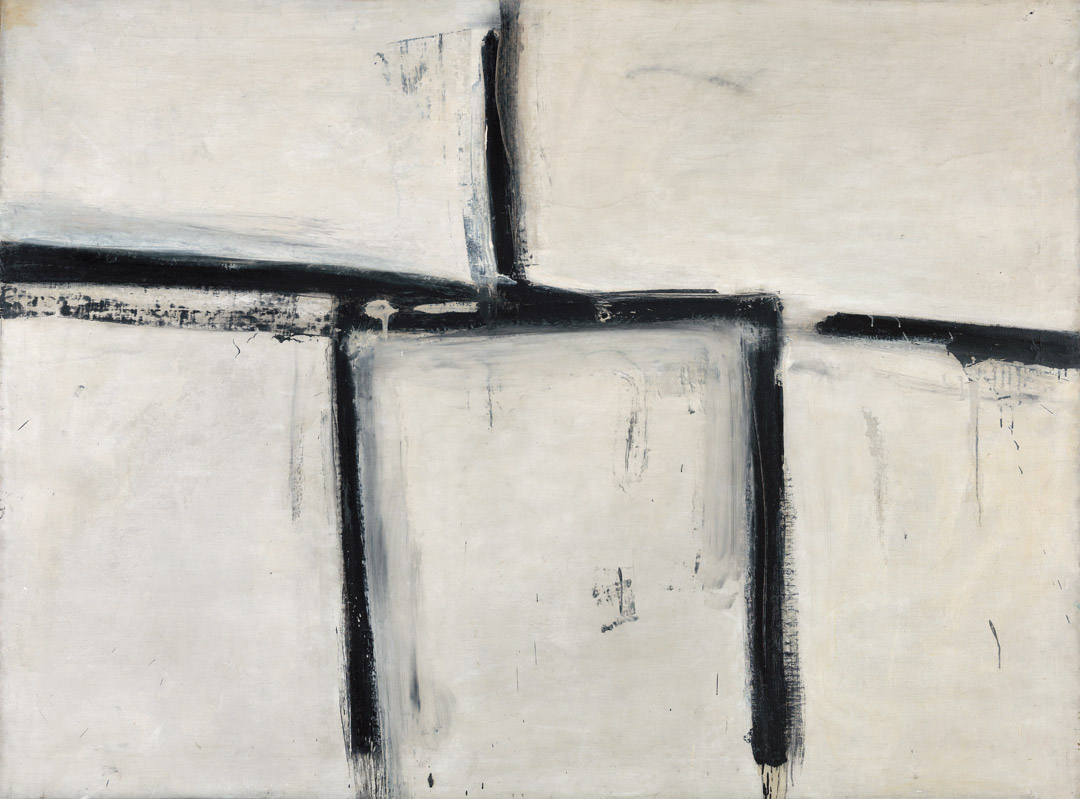
Franz Kline, Painting No. 11, 1951
Acquired November 13, 1970
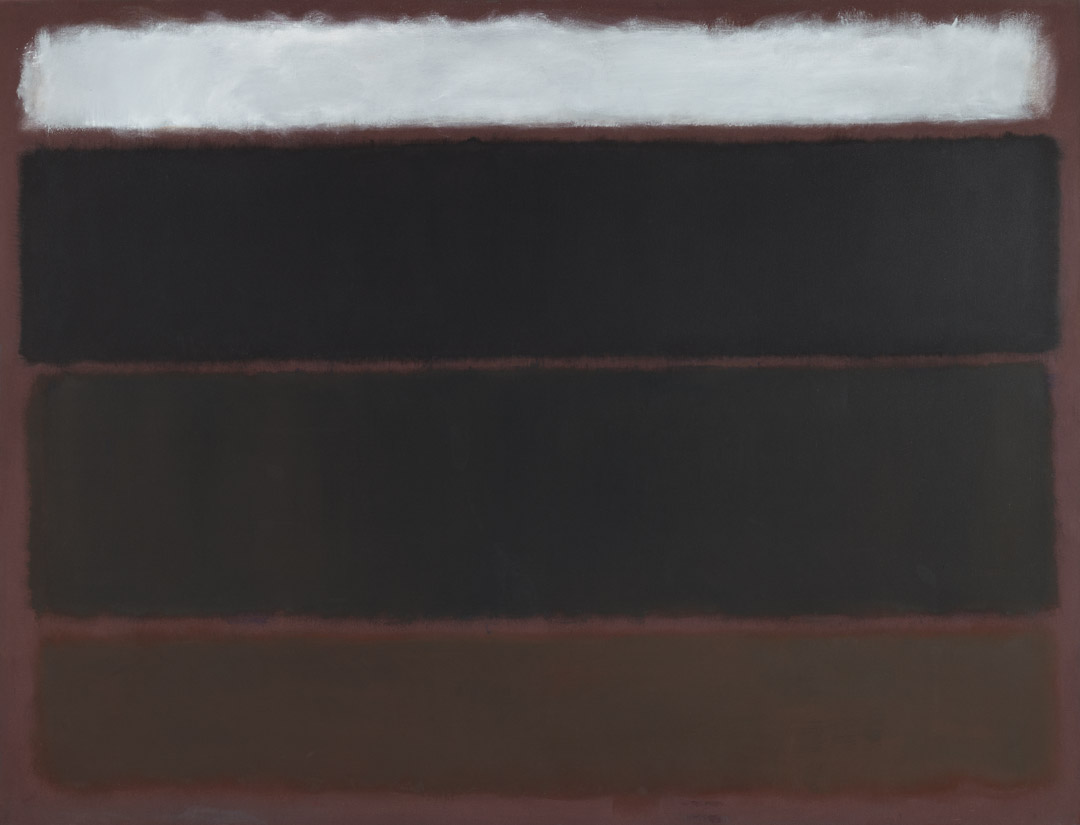
Mark Rothko, Untitled, 1963
Acquired May 18, 1972
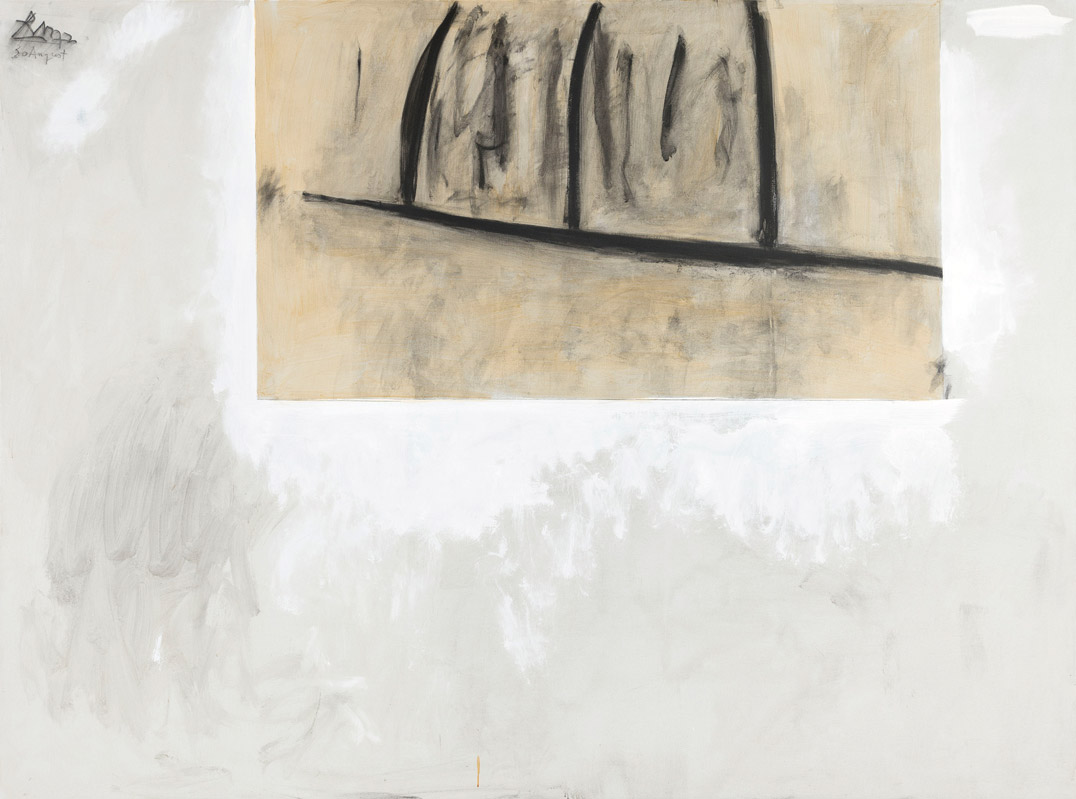
Robert Motherwell, Before the Day, 1972
Acquired October 12, 1972
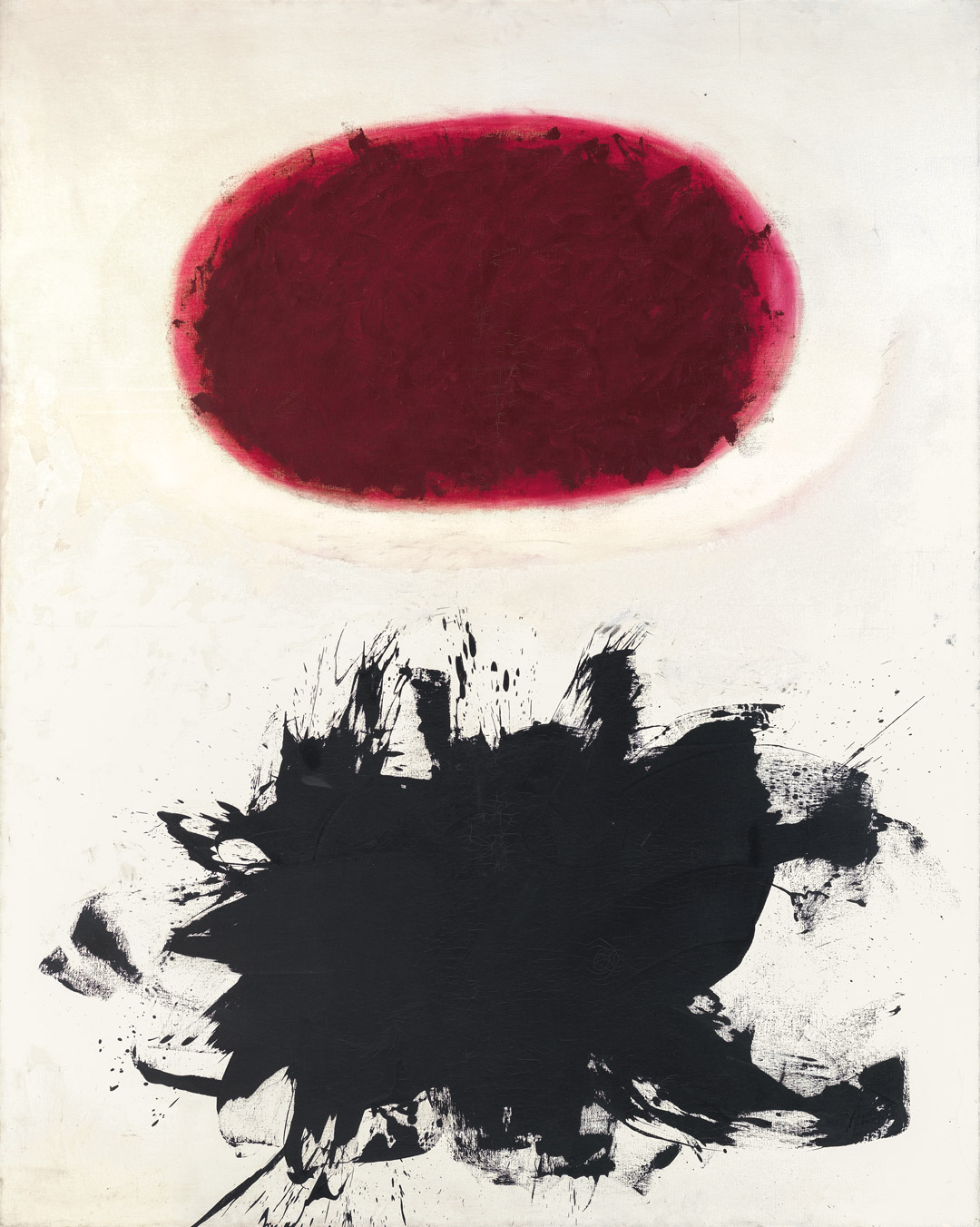
Adolph Gottlieb, Crimson Spinning #2, 1959
Acquired December 11, 1972
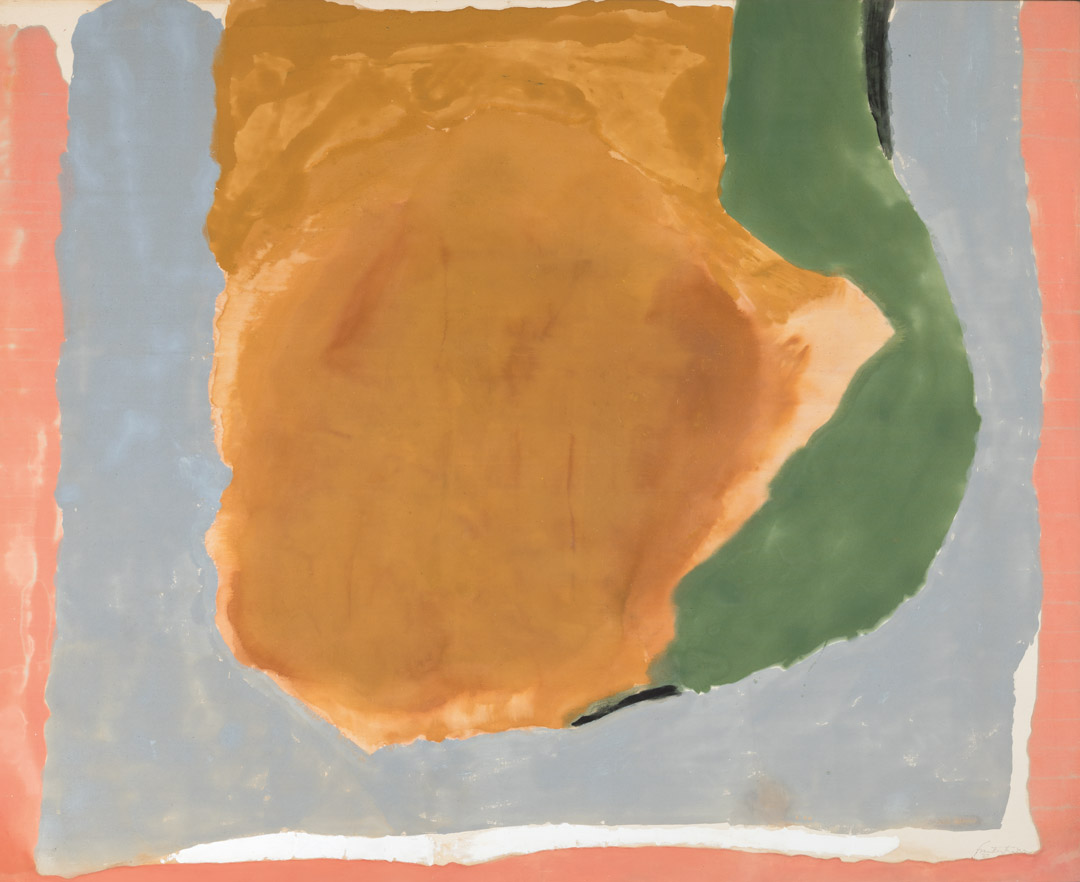
Helen Frankenthaler, Dawn Shapes, 1967
Acquired April 26, 1973
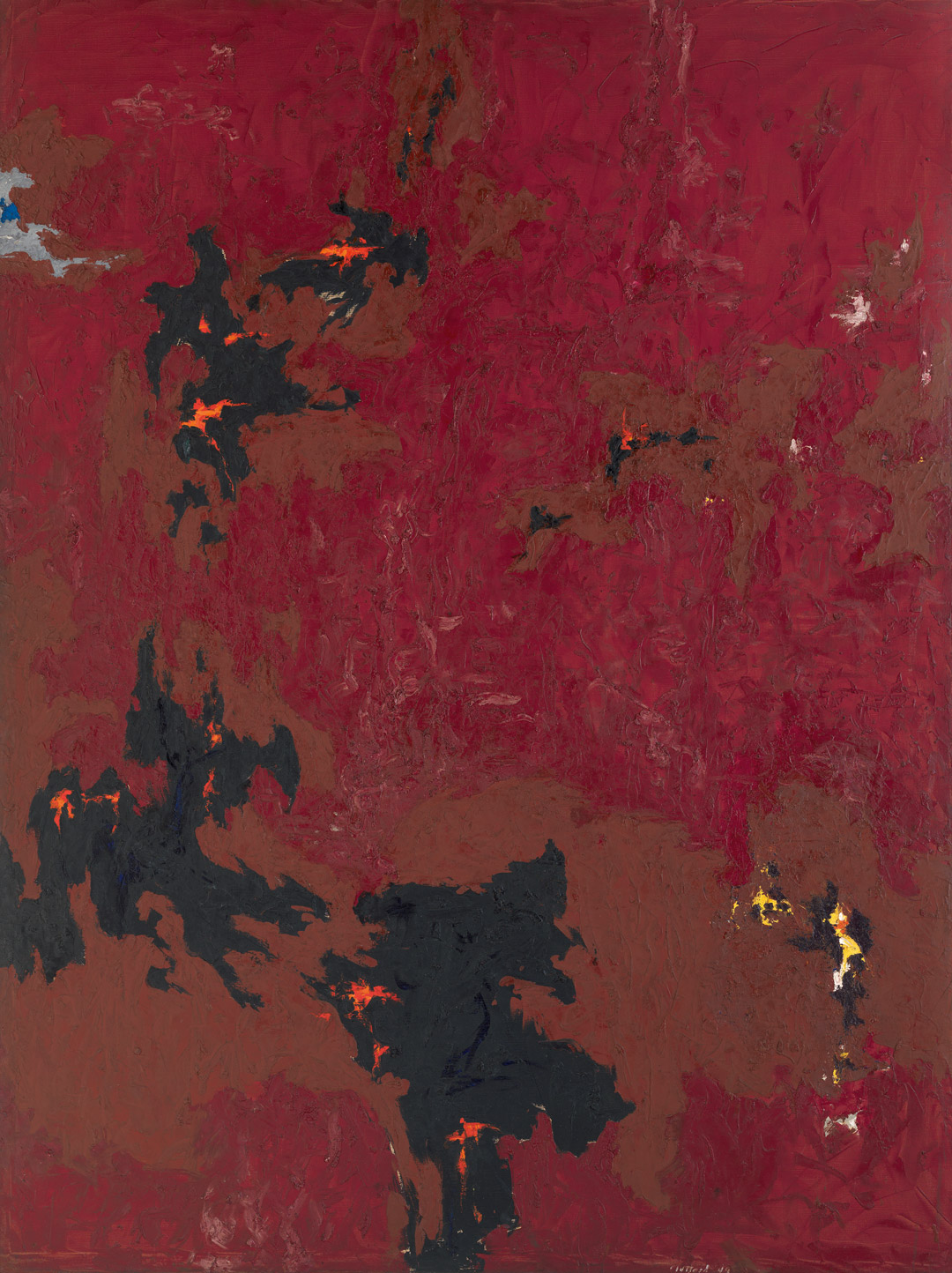
Clyfford Still, PH-338, 1949
Acquired November 10, 1973

Ad Reinhardt, Painting, 1950, 1950
Acquired January 8, 1974
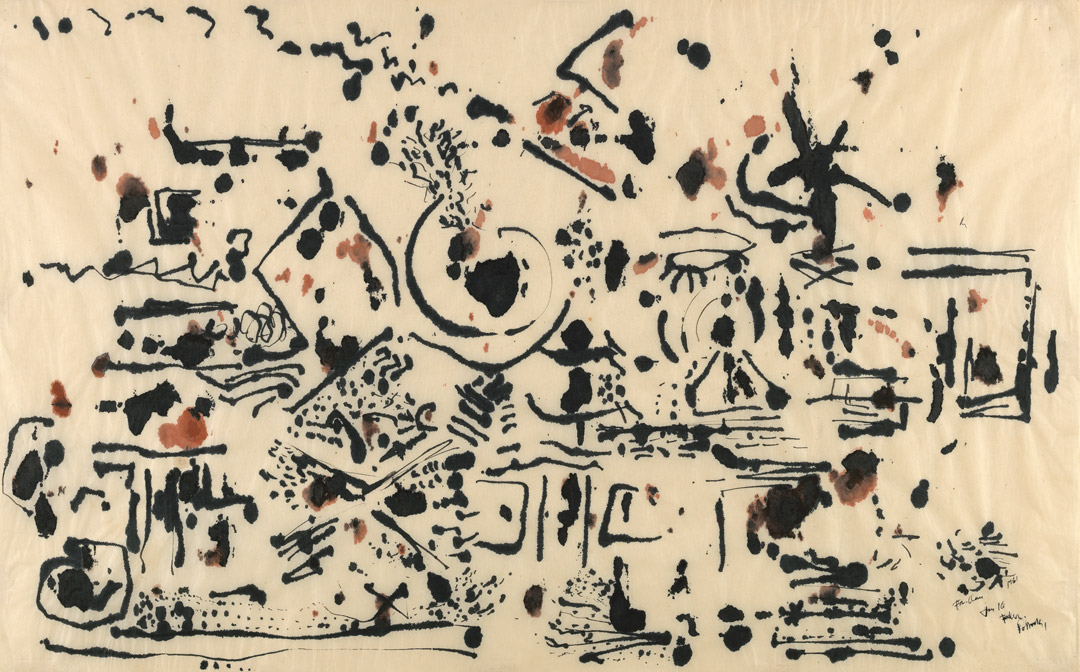
Jackson Pollock, Untitled, 1951
Acquired March 29, 1974
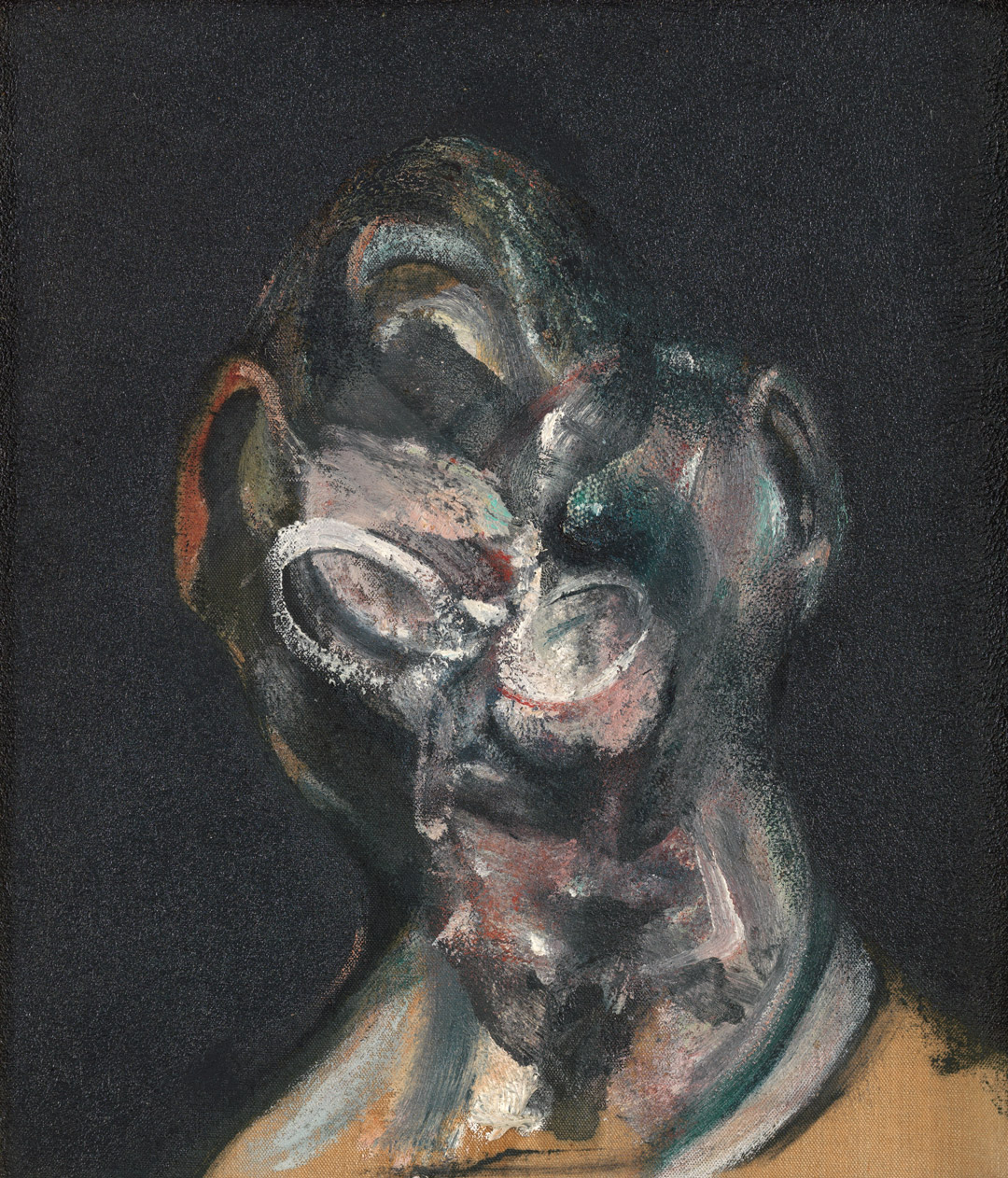
Francis Bacon, Portrait of Man with Glasses I, 1963
Acquired October 24, 1974
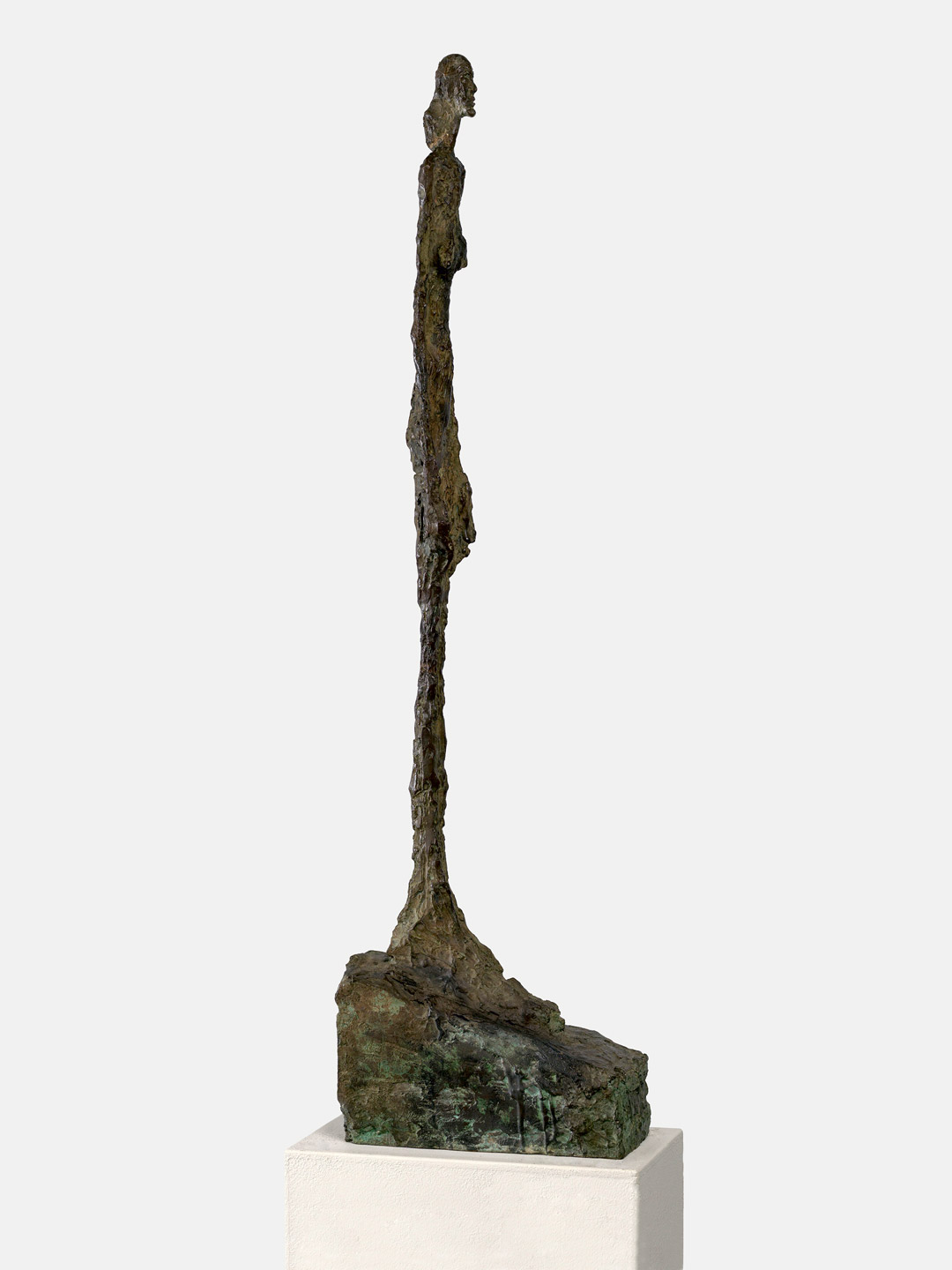
Alberto Giacometti, Femme de Venise II, 1956
Acquired January 2, 1975
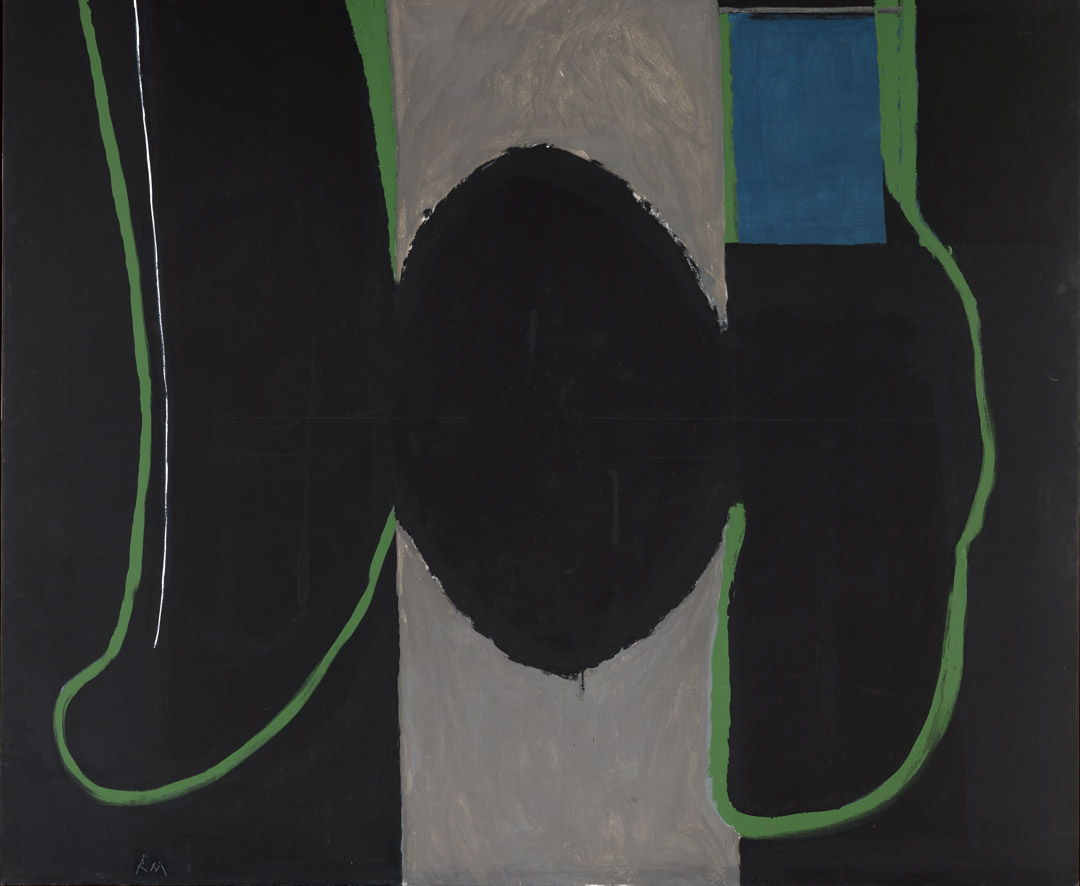
Robert Motherwell, Irish Elegy, 1965
Acquired November 7, 1975
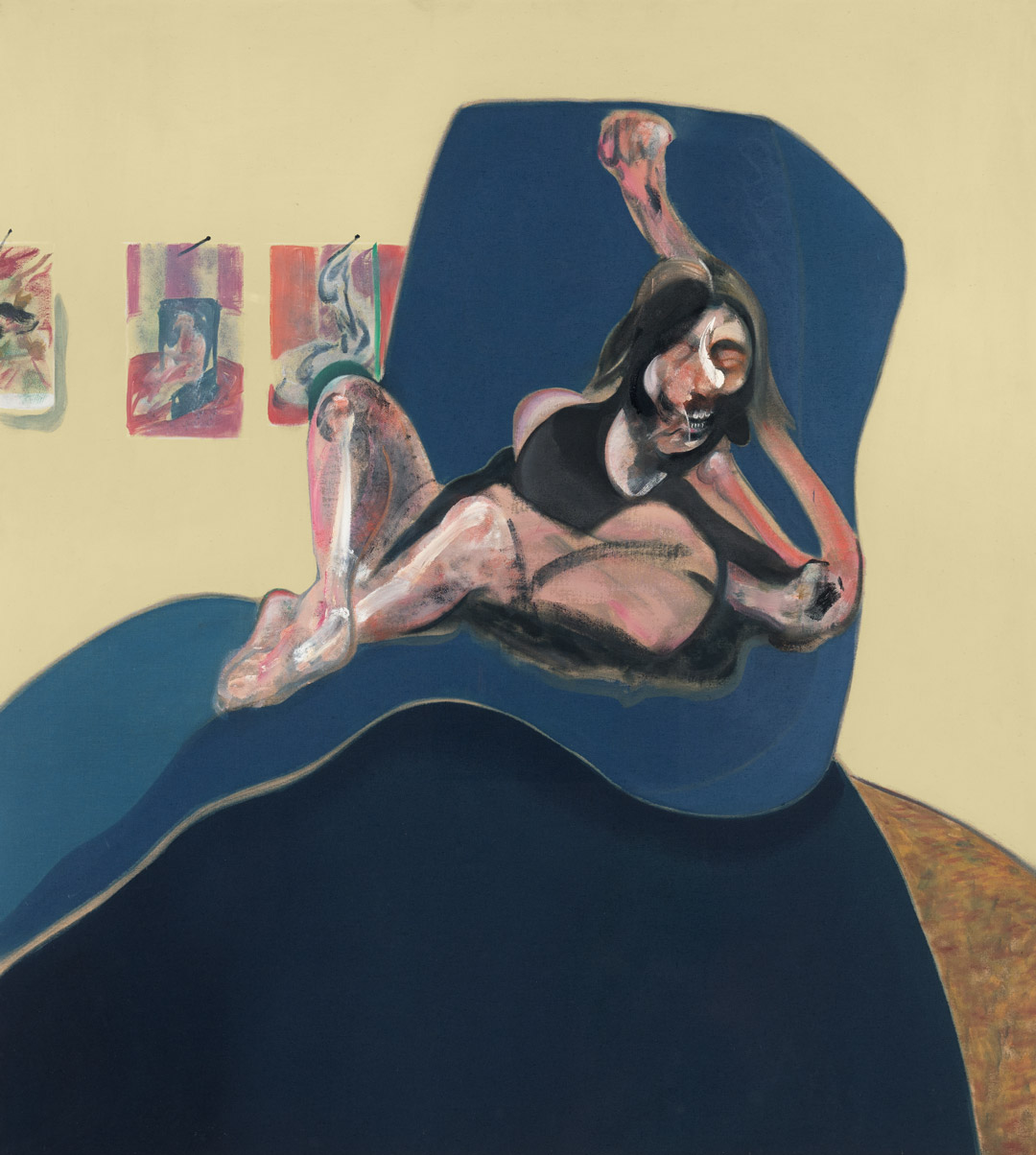
Francis Bacon, Study for a Portrait, 1967
Acquired November 20, 1976
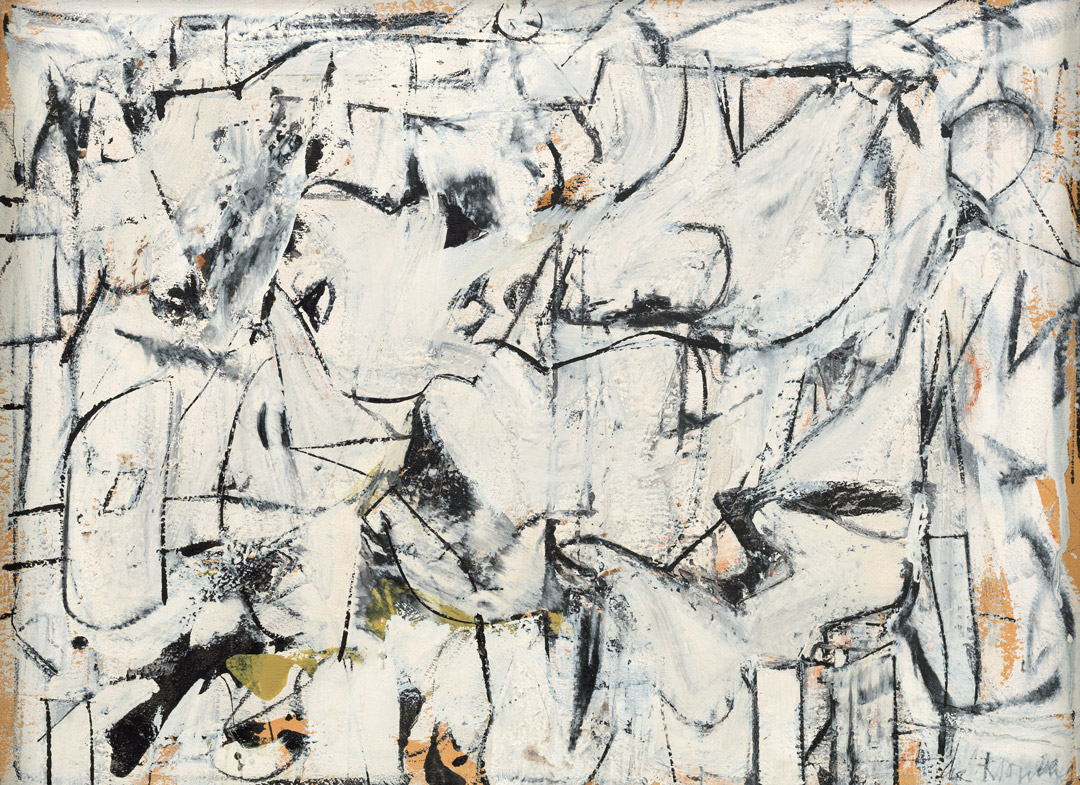
Willem de Kooning, Town Square, 1948
Acquired December 6, 1976
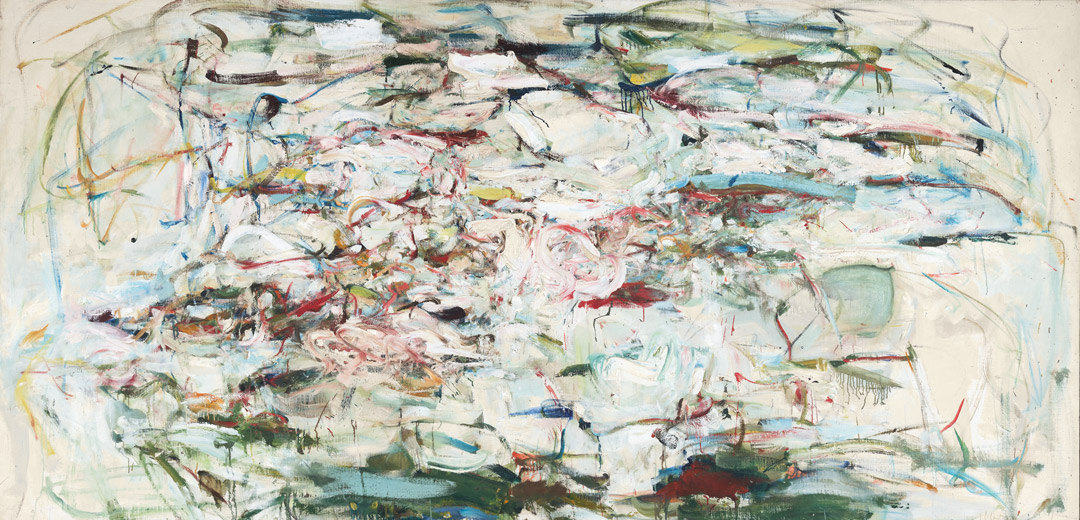
Joan Mitchell, The Sink, 1956
Acquired September 12, 1977
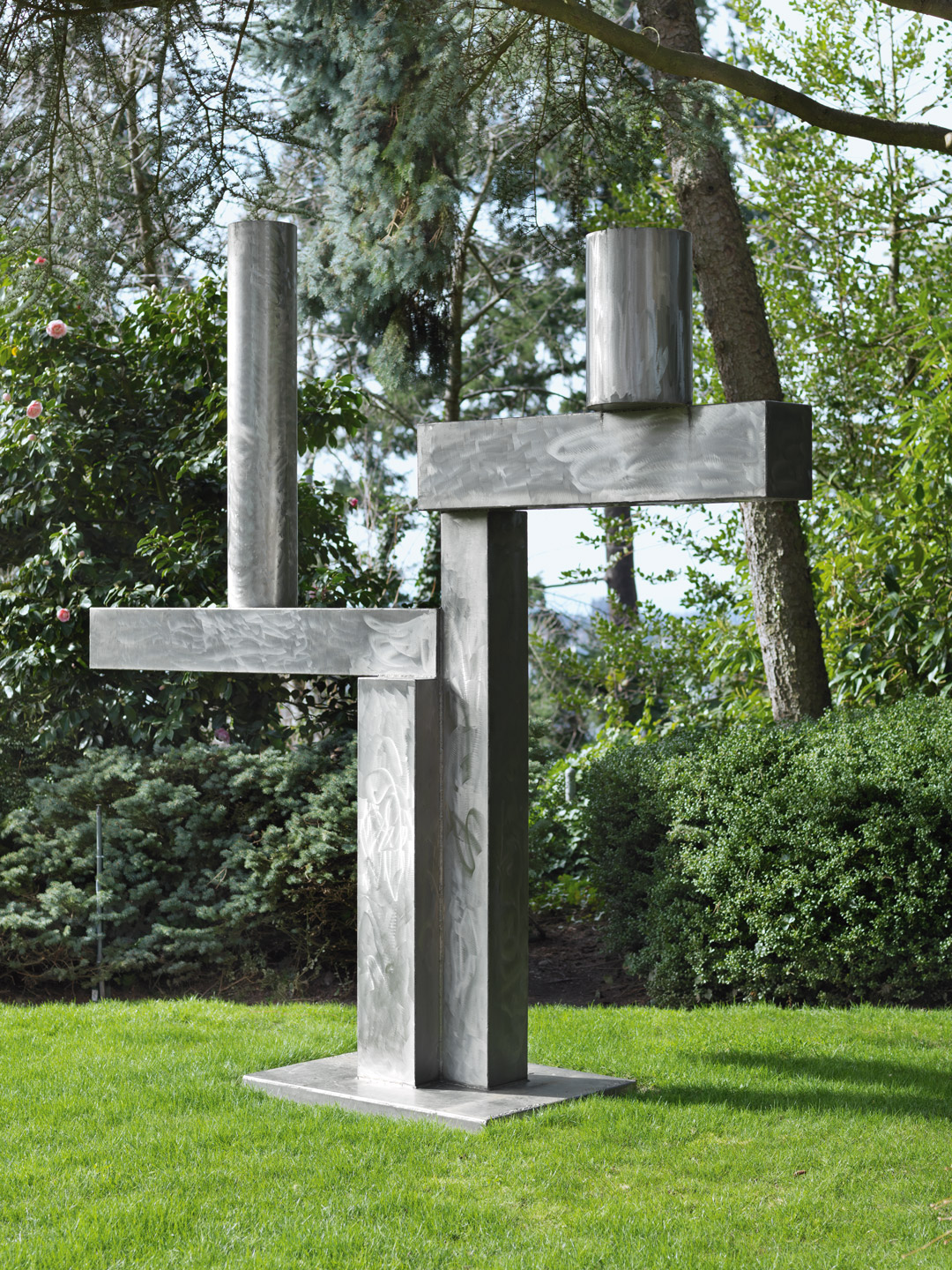
David Smith, Cubi XXV, 1965
Acquired February 22, 1978
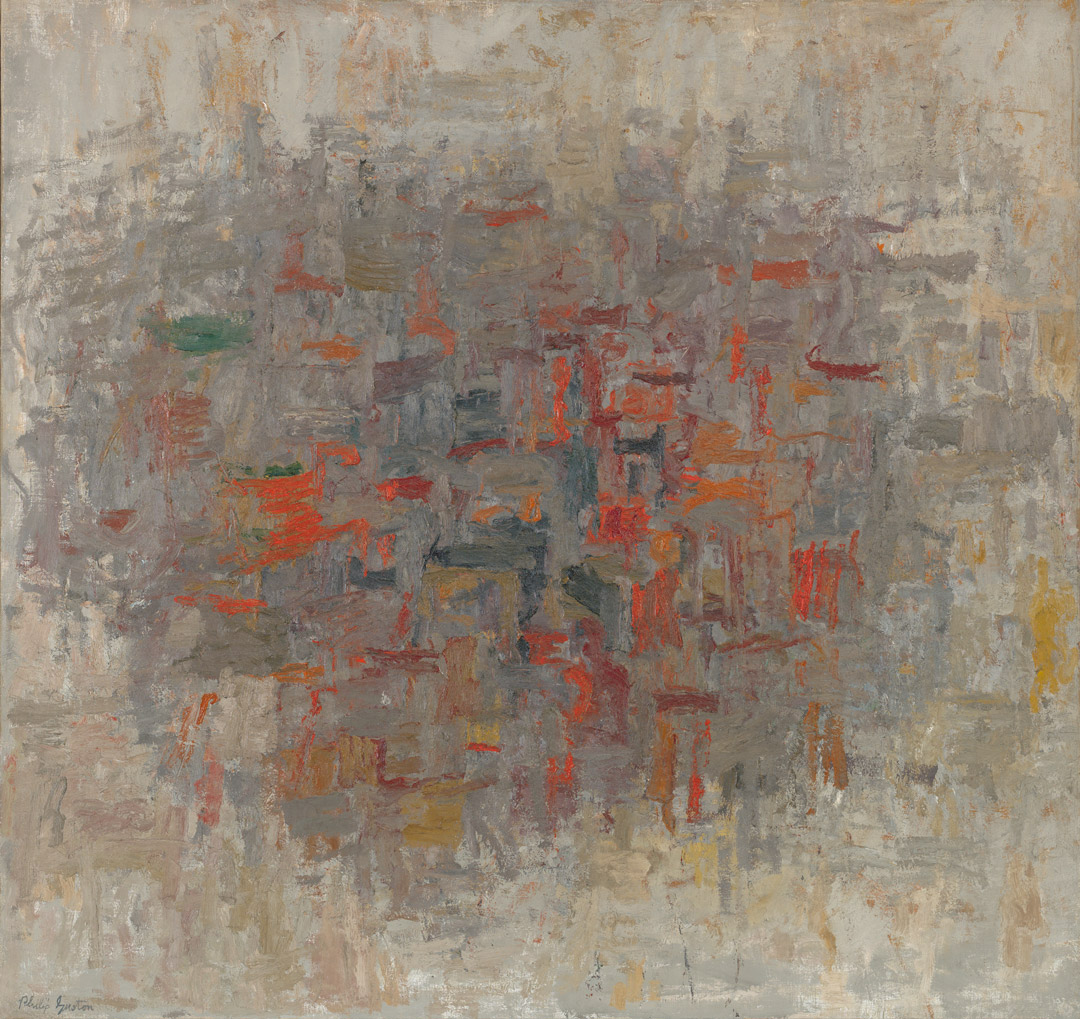
Philip Guston, To B.W.T., 1952
Acquired February 14, 1979
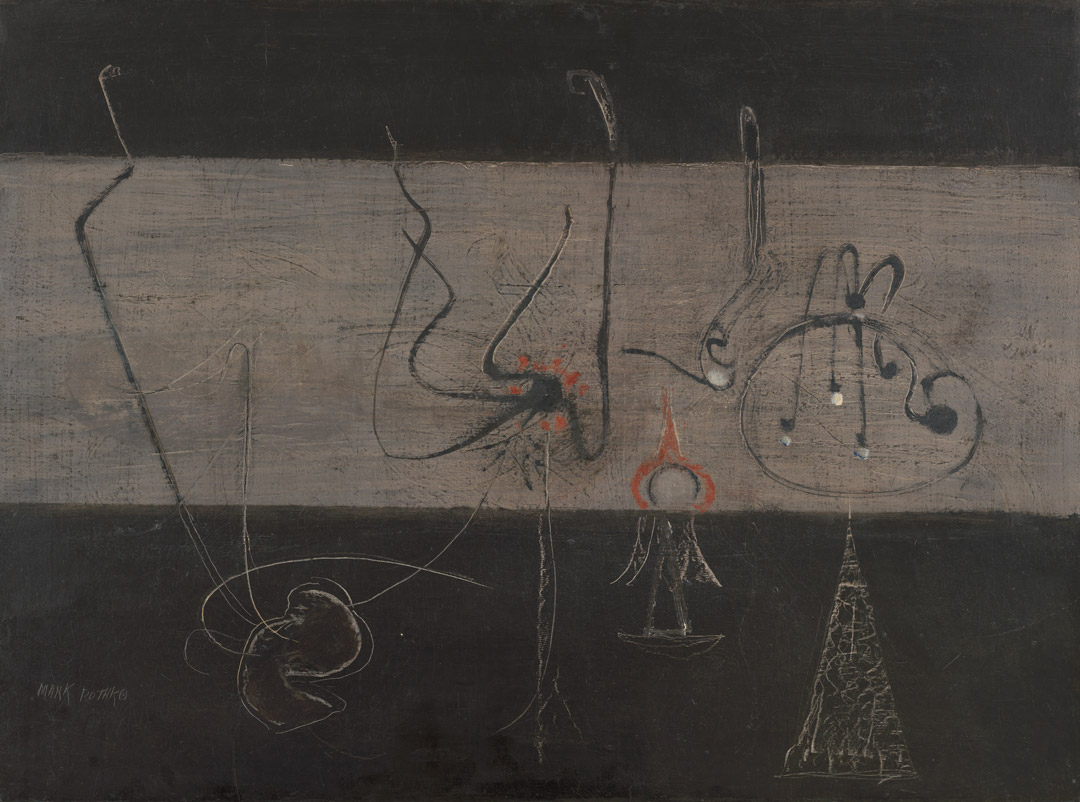
Mark Rothko, Untitled, ca.1945
Acquired November 12, 1980

Lee Krasner, Night Watch, 1960
Acquired November 19, 1981
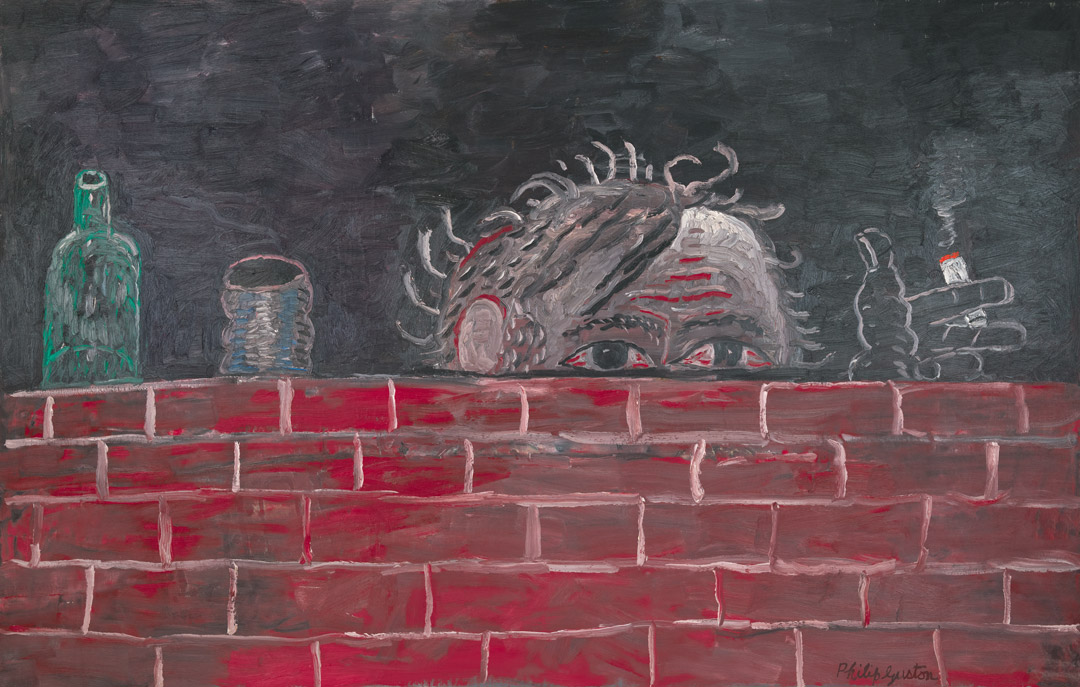
Philip Guston, The Painter, 1976
Acquired February 1, 1982



